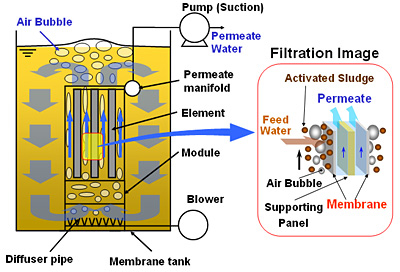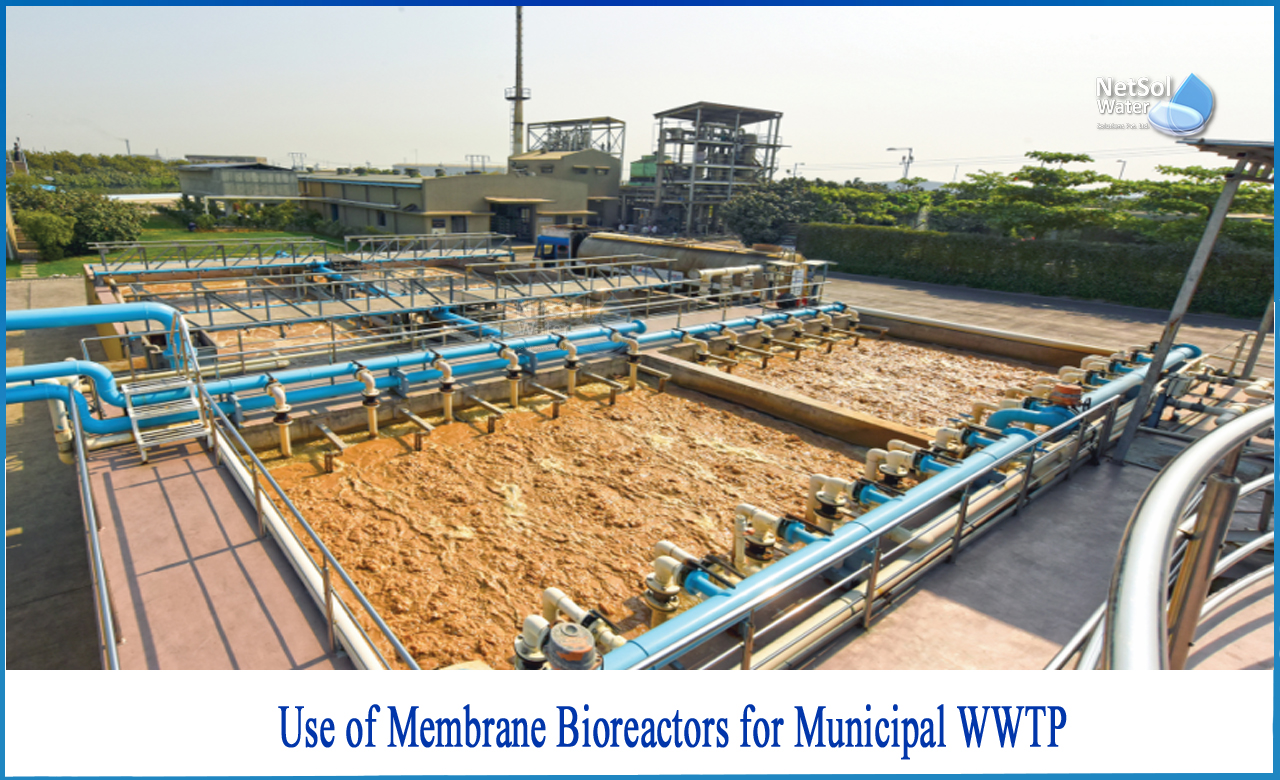Understanding the Basics of Membrane Bioreactor Systems for Wastewater Management
Understanding the Basics of Membrane Bioreactor Systems for Wastewater Management
Blog Article
Just How Membrane Layer Bioreactors Are Transforming Water Filtration Systems
The introduction of membrane layer bioreactors (MBRs) stands for a considerable advancement in the field of water purification, merging organic therapy processes with sophisticated membrane filtering modern technologies. As international water shortage magnifies, the function of MBRs in promoting drinkable water reuse and sustainable water management comes to be significantly important.
Overview of Membrane Bioreactors
Membrane layer bioreactors (MBRs) stand for a significant innovation in water purification modern technology, as they combine biological treatment processes with membrane filtering. This assimilation boosts the performance of wastewater treatment by utilizing bacteria to deteriorate organic contaminants while at the same time employing semi-permeable membrane layers to different treated water from put on hold solids and microorganisms.
The MBR system commonly contains an organic activator where the microbial population metabolizes impurities, complied with by a membrane layer filtering unit that keeps biomass and enables just tidy water to travel through. This dual functionality leads to higher effluent top quality compared to standard treatment techniques. MBRs can be run in both set and continual circulation settings, offering adaptability in style and application.
Additionally, MBRs are identified by their small impact, making them suitable for city settings with area constraints. Membrane Bioreactor. They additionally make it possible for the recovery of water for reuse, thus adding to water sustainability efforts. While MBR technology has obtained appeal in commercial and community applications, its operational complexities and power needs demand mindful consideration during implementation. Overall, MBRs go to the forefront of improving water treatment effectiveness and quality, showcasing the possibility for ingenious remedies in environmental management.
Advantages of MBR Modern Technology
The assimilation of biological therapy with membrane layer filtration supplies various benefits for water filtration processes. One of the key advantages of Membrane Bioreactor (MBR) technology is its capability to efficiently get rid of both organic and inorganic contaminants, bring about top quality effluent. The membrane layers serve as a physical barrier, stopping suspended solids and microorganisms from travelling through, which enhances the general security and dependability of cured water.
Additionally, MBR systems need a smaller impact compared to traditional therapy methods, allowing for a lot more reliable room utilization. This compact style is specifically advantageous in metropolitan settings where land is restricted. MBRs likewise demonstrate operational flexibility, suiting differing influent high qualities and circulation rates without substantial performance deterioration.
Moreover, the procedure provides boosted nutrient elimination capabilities, especially for nitrogen and phosphorus, which are crucial for stopping eutrophication in receiving waters. The lowered sludge production connected with MBR innovation additionally translates to decrease disposal expenses, making it a cost-efficient service in the lengthy run - Membrane Bioreactor. Overall, the benefits of MBR technology position it as a leading choice for sustainable and ingenious water filtration systems, addressing both environmental and economic worries
Applications in Water Purification
Applications of Membrane Layer Bioreactor (MBR) modern technology in water filtration are impactful and varied, addressing numerous treatment needs across numerous sectors. MBRs efficiently incorporate organic treatment procedures with membrane layer purification, making them ideal for municipal wastewater therapy, industrial effluent management, and even drinkable water reuse efforts.
In metropolitan settings, MBRs are increasingly employed to enhance the quality of treated wastewater, allowing for compliance with rigid discharge guidelines and assisting in the recycling of water for irrigation and non-potable usages. Their portable style additionally makes them suitable for urban settings where space is limited.
Industrially, MBR innovation is made wikipedia reference use of to treat process water and wastewater, particularly in fields such as food and drink, pharmaceuticals, and fabrics. By efficiently removing pollutants and suspended solids, MBRs help industries decrease ecological impacts while recuperating valuable sources from wastewater streams.
Moreover, MBRs are acquiring grip in decentralized water treatment applications, where small-scale systems can be deployed in remote areas or establishing regions. This flexibility enables areas to attain lasting water monitoring solutions, improving access to clean water while decreasing reliance on conventional treatment approaches.
Case Research Studies and Success Stories

In another instance, a textile manufacturing facility in Bangladesh took on MBR technology to resolve its wastewater challenges. The system reduced chemical oxygen demand (COD) levels from 1,200 mg/L to less than 100 mg/L, thus satisfying regulative standards and considerably minimizing environmental impact.
The College of Cape Community's MBR setup has actually confirmed efficient in treating greywater for non-potable reuse on campus. This task not only saves safe and clean water however additionally serves as an instructional model for lasting practices.
In addition, a fish and shellfish handling plant in Norway made use of MBR modern technology to treat effluents containing high degrees of raw material, attaining over 90% contaminant elimination. These study underscore MBR modern technology's flexibility and its vital function in enhancing water top quality across varied applications.
Future of Water Therapy Solutions
As global water shortage and contamination challenges increase, cutting-edge water therapy services are ending up being increasingly important to guarantee sustainable accessibility to tidy water. The future of water therapy lies in the combination of advanced modern technologies that enhance the effectiveness and efficiency of filtration processes. Membrane bioreactors (MBRs) are at the forefront of this advancement, incorporating biological therapy with membrane purification to create top notch effluent suitable for different applications.

Arising fads such as resource recuperation from wastewater, including nutrients and power, will additionally change treatment facilities right into environment-friendly hubs. In addition, developments in nanotechnology and membrane materials guarantee improved efficiency and long life of filtering systems.

Final Thought
In conclusion, membrane bioreactors stand for a substantial advancement in water purification modern technologies, efficiently integrating organic treatment with innovative membrane filtration. The many benefits, including boosted effluent top quality and reduced spatial demands, make MBRs specifically suitable for urban applications. Their duty in safe and clean water reuse and lasting water management highlights their value in dealing with worldwide water scarcity difficulties. Continued research study and advancement will certainly even more improve the efficiency and fostering of MBR modern technology, guaranteeing a resilient future for water treatment services.
The emergence you can find out more of membrane bioreactors (MBRs) represents a substantial improvement in the field of water purification, merging organic treatment procedures with cutting-edge membrane layer filtration innovations. As worldwide water shortage escalates, the function of MBRs in assisting in drinkable water reuse and lasting water monitoring comes to be significantly crucial. They additionally enable the recuperation of water for reuse, thus adding to water sustainability campaigns.As global water shortage and contamination challenges escalate, ingenious water treatment options are coming to be progressively important to guarantee lasting access to tidy water. Their duty in drinkable water reuse and lasting water administration highlights their relevance in addressing international water shortage difficulties.
Report this page